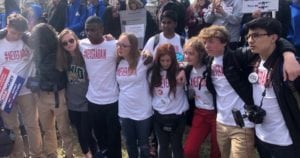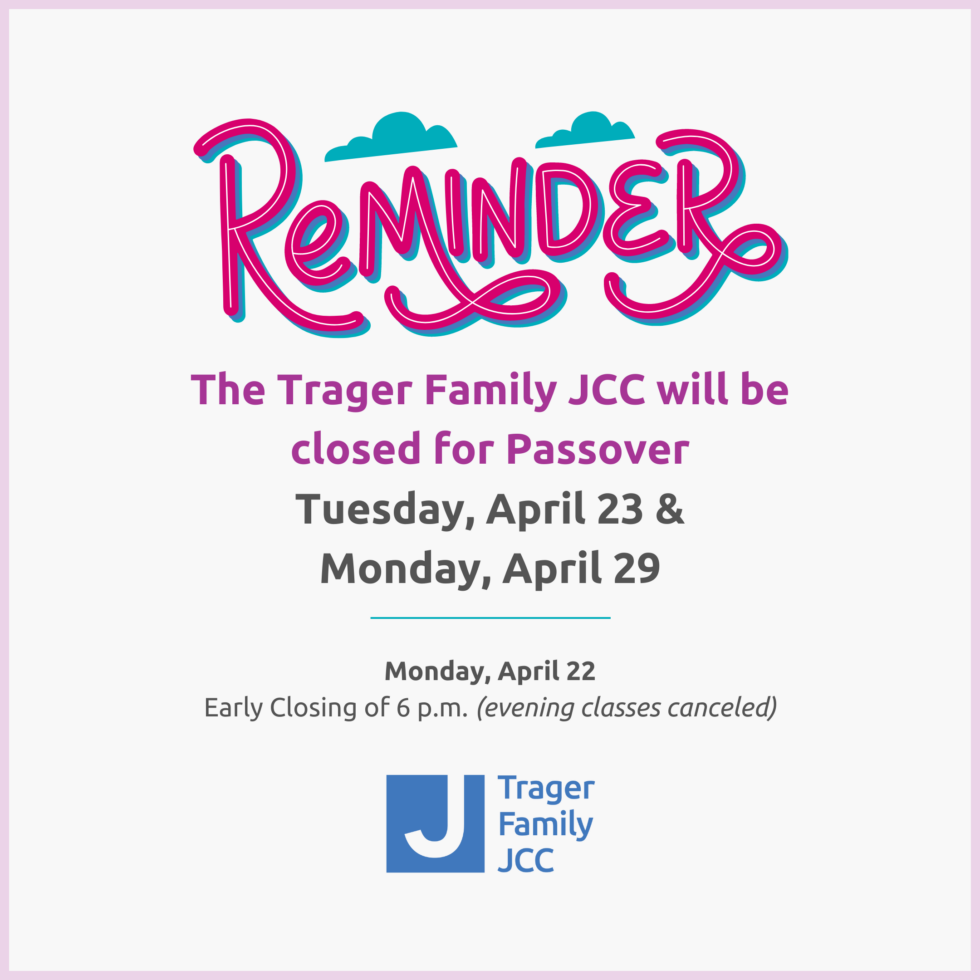
DuPont Manual students participate in the March For Our Lives in Washington, D.C. (photo provided by Lucy Calderon)
Two Jewish Louisville teens traveled to Washington for the March 25 March For Our Lives, not just to participate, but to cover it.
Sylvia Goodman and Lucy Calderon, both 17, are on the staff of On The Record, a student-produced magazine in Louisville. They joined a group of their classmates from duPont Manual High School making the trip.
OTR had been planning coverage of school shootings, focusing on the January 23 attack at Marshall County High School, but the shootings at Marjory Stoneman Douglas High School in Parkland, Florida, convinced them to broaden their scope.
“Our main goal was to cover the march, and as a side product, because we’re all very passionate about the issue, we participated in the march,” said Goodman, a senior.
More than 800,000 people, young and old, joined the Washington march, but similar demonstrations took place nationwide and on every continent on Earth except for Antarctica.
The young journalists made clear they went to Washington to practice “advocacy journalism,” not objective journalism. They said they hold strong beliefs on gun violence and thought their coverage should reflect them.
“We were important stakeholders in the issue,” said Calderon, a junior. “We would be doing the story such a disservice if we didn’t include our views.”
She added, “Our goal was to live the march.”
Advocacy journalism is a legitimate genre of journalism that, unlike propaganda, openly expresses a point of view in a fact-based manner. Most news organizations in the Jewish media practice advocacy journalism as it relates to Israel.
Accompanied by chaparones, including Goodman’s mother, the 19 student journalists from OTR and other duPont Manual publications making up the Crimson Student Press Network assembled the morning of the march on Pennsylvania Avenue, near the front of the massive crowd. They then dispersed into the throng to cover the event.
Goodman said she was moved to tears by the words of many speakers, especially an 11-year-old girl from Chicago who described what it was like to live with gun violence.
“It struck me how lucky I am,” she said, “how important this issue is, and how important it should be to everyone in the city.”
Calderon noted the wide age range of those who turned out for the event. She talked to a 4-year boy who described how he builds “houses” for earthworms so they don’t dry in the sun, and how he thinks people should also be safe.
On the other end of the range, she described 70-something woman going from group to group “trying so hard” to get a call-and-respond chant going:
“What do we want?”
“Gun control!”
“When do we want it?”
“Now!”
“I originally thought this was going to be a student-led march, [so] the majority there would be students,” Calderon said, “but there was an overwhelming amount of older people there, people in their 40s and 50s, and that felt really good.”
Both young people dismissed efforts by people who tried to demean the march by claiming the teens were manipulated by other forces.
“People like us and the kids on the stage care so much about a topic, and you’re going to deny them the right to speak out about what they care about?” Goodman asked rhetorically. “We care about this; we’re going speak out and we shouldn’t be belittled in our efforts; we should be commended.”
Goodman said she returned from the march feeling energized, though initially, she didn’t feel that way. Immediately after the event, feeling overwhelmed by the challenge, she said she cried on the shoulder of her mother, Sharon Goodman.
But despair morphed into determination as she considered how past student movements evolved.
“They probably had the same thoughts,” she said. “As they kept pushing and pushing, things changed. The first march is not the last march.”
Calderon, who is writing a piece about the march from the Jewish perspective, left the event feeling “empowered.”
“The march gave me a new sense of feeling like a little kid again. It sounds a little weird when I say it, but the march showed how I can make a difference.
“It’s like when you’re a little kid, and they ask what you want to be when you grow up,” she explained. “That’s how I feel right now.”
In her case, she has wanted for some time to become an OBGYN and improve reproductive health care in Kentucky. Now, she’s also interested in parallel careers in journalism and politics.
“I want to be a journalist and I want to become a senator,” she said. “I have this renewed opinion that I can do anything.”
(Editor’s note: Follow CSPN’s coverage of the march at theCSPM.org.)



